Structural insights into G-quadruplexes: towards new anticancer drugs
- PMID: 20563318
- PMCID: PMC2886307
- DOI: 10.4155/fmc.09.172
Structural insights into G-quadruplexes: towards new anticancer drugs
Abstract
DNA G-quadruplexes are DNA secondary structures formed in specific G-rich sequences. DNA sequences that can form G-quadruplexes have been found in regions with biological significance, such as human telomeres and oncogene-promoter regions. DNA G-quadruplexes have recently emerged as a new class of novel molecular targets for anticancer drugs. Recent progress on structural studies of the biologically relevant G-quadruplexes formed in human telomeres and in the promoter regions of human oncogenes will be discussed, as well as recent advances in the design and development of G-quadruplex-interactive drugs. DNA G-quadruplexes can readily form in solution under physiological conditions and are globularly folded nucleic acid structures. The molecular structures of intramolecular G-quadruplexes appear to differ from one another and, therefore, in principle may be differentially regulated and targeted by different proteins and drugs.
Figures


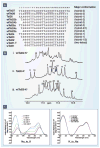
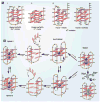



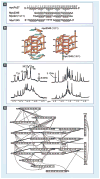

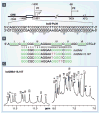
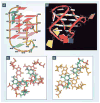


Similar articles
-
DNA G-Quadruplex in Human Telomeres and Oncogene Promoters: Structures, Functions, and Small Molecule Targeting.Acc Chem Res. 2022 Sep 20;55(18):2628-2646. doi: 10.1021/acs.accounts.2c00337. Epub 2022 Sep 2. Acc Chem Res. 2022. PMID: 36054116 Free PMC article.
-
Sequence, stability, and structure of G-quadruplexes and their interactions with drugs.Curr Protoc Nucleic Acid Chem. 2012 Sep;Chapter 17:Unit17.5. doi: 10.1002/0471142700.nc1705s50. Curr Protoc Nucleic Acid Chem. 2012. PMID: 22956454 Free PMC article. Review.
-
Targeting G-quadruplex DNA structures in the telomere and oncogene promoter regions by benzimidazole‒carbazole ligands.Eur J Med Chem. 2018 Mar 25;148:178-194. doi: 10.1016/j.ejmech.2018.01.091. Epub 2018 Feb 5. Eur J Med Chem. 2018. PMID: 29459277
-
G-Quadruplex DNA and RNA.Methods Mol Biol. 2019;2035:1-24. doi: 10.1007/978-1-4939-9666-7_1. Methods Mol Biol. 2019. PMID: 31444741 Free PMC article.
-
Structures, folding patterns, and functions of intramolecular DNA G-quadruplexes found in eukaryotic promoter regions.Biochimie. 2008 Aug;90(8):1149-71. doi: 10.1016/j.biochi.2008.02.020. Epub 2008 Feb 29. Biochimie. 2008. PMID: 18355457 Free PMC article. Review.
Cited by
-
The major G-quadruplex formed in the human platelet-derived growth factor receptor β promoter adopts a novel broken-strand structure in K+ solution.J Am Chem Soc. 2012 Aug 15;134(32):13220-3. doi: 10.1021/ja305764d. Epub 2012 Aug 6. J Am Chem Soc. 2012. PMID: 22866911 Free PMC article.
-
DNA G-Quadruplex in Human Telomeres and Oncogene Promoters: Structures, Functions, and Small Molecule Targeting.Acc Chem Res. 2022 Sep 20;55(18):2628-2646. doi: 10.1021/acs.accounts.2c00337. Epub 2022 Sep 2. Acc Chem Res. 2022. PMID: 36054116 Free PMC article.
-
Rationally designed DNA therapeutics can modulate human TH expression by controlling specific GQ formation in its promoter.Mol Ther. 2022 Feb 2;30(2):831-844. doi: 10.1016/j.ymthe.2021.05.013. Epub 2021 May 14. Mol Ther. 2022. PMID: 33992806 Free PMC article.
-
Site specific replacements of a single loop nucleoside with a dibenzyl linker may switch the activity of TBA from anticoagulant to antiproliferative.Nucleic Acids Res. 2015 Sep 18;43(16):7702-16. doi: 10.1093/nar/gkv789. Epub 2015 Aug 6. Nucleic Acids Res. 2015. PMID: 26250112 Free PMC article.
-
Non-canonical DNA structures: Diversity and disease association.Front Genet. 2022 Sep 5;13:959258. doi: 10.3389/fgene.2022.959258. eCollection 2022. Front Genet. 2022. PMID: 36134025 Free PMC article. Review.
References
-
- Sen D, Gilbert W. A sodium-potassium switch in the formation of four-stranded G4-DNA. 1990;344(6265):410–414. - PubMed
-
- Hud NV, Plavec J. The role of cations in determining quadruplex structure and stability. In: Neidle S, editor. Quadruplex Nucleic Acids. Royal Society of Chemistry Publishing; Cambridge UK: 2006. pp. 100–130.
-
- Neidle S, Parkinson G. Telomere maintenance as a target for anticancer drug discovery. Nat Rev Drug Discov. 2002;1(5):383–393. - PubMed
Publication types
MeSH terms
Substances
Grants and funding
LinkOut - more resources
Full Text Sources
Other Literature Sources
